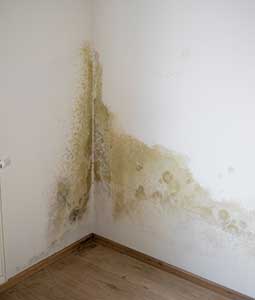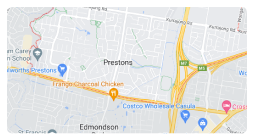You walk into a room and catch a faint musty smell. You spot dark patches forming on the ceiling or behind furniture. Maybe your family’s been sneezing more than usual. These could all be signs of mould—and while it’s easy to dismiss, it could point to something more serious.
Mould isn’t just about discoloured walls. In Sydney, where coastal humidity and fluctuating temperatures create the perfect environment for mould growth, it’s a silent invader that can cause health issues, reduce your property’s value, and become expensive to fix if ignored.
So what’s the smart first move? A mould inspection. Especially in Sydney, it’s one of the most effective ways to stop the problem before it spreads.
Let’s unpack what’s actually involved in a professional mould inspection and why skipping this step can cost you more than just money.
Why Is Mould So Common in Sydney Homes?
Sydney’s climate plays a huge role. High humidity levels—especially in summer and after rainy seasons—combined with poor ventilation in bathrooms, laundry rooms, and older buildings, create ideal conditions for mould to thrive.
From Bondi apartments to suburban homes in the Inner West, no home is immune. And mould doesn’t need a flood to flourish. Even small, unnoticed leaks or trapped condensation are enough to get it growing behind walls or under floors.
What Is a Mould Inspection?
A mould inspection is a detailed, professional assessment of your property designed to:
- Identify existing mould growth
- Uncover hidden moisture issues
- Detect areas at risk
- Determine the extent of contamination
- Recommend a targeted plan for removal and prevention
Think of it like a health check-up for your home. You don’t want someone just eyeballing it with a flashlight. You want trained mould experts in Sydney using specialised tools and a deep understanding of how mould behaves in different environments.
What Happens During a Professional Mould Inspection?
Every reliable inspection follows a process that goes far beyond surface cleaning. Here’s what a typical inspection from a trusted team like SWHR looks like:
1. Initial Property Assessment
The inspector will ask questions about moisture history, plumbing issues, HVAC systems, and past incidents like water damage. Understanding your home’s condition helps guide the rest of the inspection.
2. Visual and Structural Examination
Every room is inspected—ceilings, walls, floors, window frames, attics, basements, under sinks. Inspectors look for tell-tale signs like:

- Discolouration
- Warping or bubbling paint
- Visible mould colonies
- Watermarks
- Musty odours
3. Moisture Mapping
Using thermal imaging cameras and moisture meters, the inspector pinpoints areas where excess moisture may be trapped behind walls or under floors—often where the naked eye can’t see.
4. Air and Surface Sampling (if needed)
In cases where the mould isn’t clearly visible but suspected, samples may be taken from the air or surfaces for laboratory testing. This helps determine the species and spore concentration, guiding the appropriate removal method.
5. Comprehensive Reporting
After the inspection, you’ll receive a detailed report that includes:
- Photos and diagrams
- Locations and severity of mould
- Likely causes and contributing factors
- Recommendations for professional mould removal services in Sydney
- Preventative advice to stop mould from returning
Why a Free Mould Inspection in Sydney Isn’t Always Free
You’ll often see ads offering a free mould inspection in Sydney. While that sounds appealing, be cautious. Many of these “free” services are basic visual checks and don’t include moisture mapping, lab testing, or written reports. Others may use it as a sales tactic to upsell unnecessary services.
When dealing with your family’s health and property integrity, it’s worth investing in an independent, expert-level inspection with clear, actionable outcomes.
How Mould Affects Your Health and Home
Mould releases spores into the air—microscopic particles that can trigger:
- Respiratory problems
- Asthma flare-ups
- Skin rashes
- Headaches
- Chronic fatigue
- Eye, nose, and throat irritation
Infants, elderly people, and those with compromised immune systems are especially vulnerable.
On top of health concerns, mould damages timber, drywall, carpets, insulation, and even the foundations of your home. Left untreated, it can reduce your property’s resale value and result in costly structural repairs.
When Should You Get a Mould Inspection?
Here are common signs that it’s time to book a professional mould inspection:
- Persistent musty odour that doesn’t go away
- Discolouration or stains on ceilings and walls
- Peeling paint or wallpaper
- Family members experiencing allergy-like symptoms indoors
- Recent flooding or plumbing leaks
- Planning to sell or buy a property in Sydney
Even if there’s no visible mould, if you suspect a hidden issue, don’t ignore it. Early detection can save you thousands in remediation costs and protect your health in the long run.
Why Choose Mould Experts Sydney?
DIY kits and general cleaners can’t match the level of expertise offered by certified specialists. Companies like SWHR offer:
- Qualified, experienced inspectors
- Advanced equipment (thermal imaging, humidity meters, air testing)
- Transparent reporting
- End-to-end solutions including professional mould removal in Sydney
- Preventive advice tailored to Sydney’s unique climate
Their team understands how local conditions—from Bondi’s salty air to Parramatta’s wet winters—can influence mould growth. This local knowledge is critical to long-term results.
Real-Life Experience: A Sydney Family’s Mould Wake-Up Call
“We noticed some weird smells in our baby’s room. No visible mould, just a damp feeling. We booked an inspection with SWHR, and they found high humidity and hidden mould behind the built-in wardrobe. We caught it early thanks to their report. Totally worth it.”
– Lisa & Michael, Inner West
FAQs
Can mould come back after removal?
Yes—if the root cause (like moisture or poor ventilation) isn’t addressed. That’s why proper inspection is key before and after professional mould removal.
Is a mould inspection invasive?
Not at all. Most tools used, like thermal imaging and moisture meters, are non-destructive. Wall or surface testing only occurs if deeper contamination is suspected.
How much does a mould inspection cost in Sydney?
Prices typically start around $250–$450 for standard homes. While a free mould inspection in Sydney may sound attractive, make sure it includes full diagnostics and reporting.
Can I do my own mould check?
You can inspect for visible signs, but without the right tools and experience, you’ll likely miss hidden threats. For lasting peace of mind, it’s best to leave it to mould experts in Sydney.
Don’t Wait for Mould to Get Worse
The longer mould lingers, the harder it is to remove—and the more damage it causes.
Whether you’ve seen early signs or you just want peace of mind, book a professional mould inspection with SWHR. Their certified team delivers detailed reporting, real solutions, and prevention strategies that actually work.











